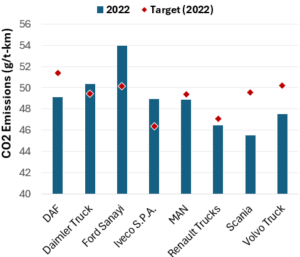Tech Brief
CARB and EPA Low NOx Engines and Trucks Announced

Background
Both California (CARB) and the U.S. EPA have set stringent standards for limiting NOx emissions from heavy-duty trucks. We have covered these standards previously. Without going into the intricacies of the rules and the differences, it is important to point out that compared to today, California requires an intermediate 75% reduction of NOx starting model year (MY) 2024, while starting MY 2027, the final EPA tailpipe standards apply across the country and require a NOx reduction of 82.5% on existing FTP & RMC lab transient test cycles.

Conference Summary – SAE WCX 2025
![]()
A summary of the “SAE WCX 2025” conference held in Detroit.

IRENA Renewable Energy Capacity Statistics 2025
![]()
According to the latest report from IRENA, 2024 saw the largest increase in renewable capacity, accounting for 92.5% of overall power additions.

CO2 Emissions Performance of Heavy-Duty Vehicles in Europe – 2022 Results
![]()
The European Commission has published the official 2022 CO2 emission results for heavy-duty vehicles. Many OEMs are ahead of the targets and have gained credits, while others have their work cut out as we approach the 2025 target.

